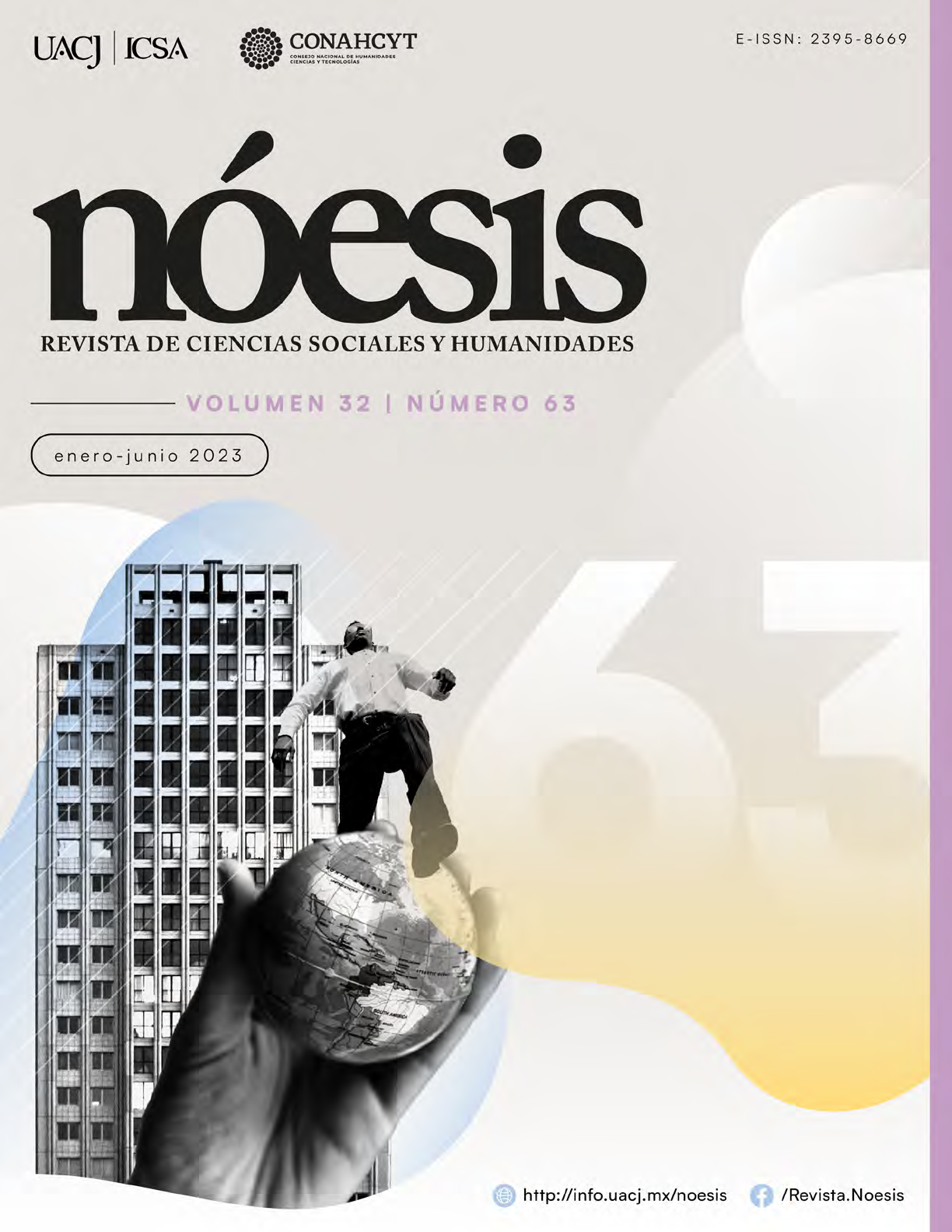Gender parity and socioeconomic representation in subnational legislatures in Mexico: more equitable congresses?
Main Article Content
Abstract
The article analyzes if gender parity in subnational legislatures in México has produced a more equitable social representation. It explores the plurality of gender parity in terms of socioeconomic differences, and female and male representation. Using data from Censo de Poderes legislativos Estatales 2020, the article classifies subnational legislators by socioeconomic levels and compared with CONEVAL’s methodology of social stratification in Mexico. The tested hypothesis is that gender parity has not produced a favorable impact on a more equitable political representation in socioeconomic terms so far. Female and male political representation continues to be dominated by upper socioeconomic levels.
Downloads
Article Details

This work is licensed under a Creative Commons Attribution-NonCommercial-ShareAlike 4.0 International License.
References
Alexander, A. (2012) Change in women’s descriptive representation and the belief in women’s ability to govern: A virtuous cycle. Politics and Gender, 8 (4), 437–464. https://doi.org/10.1017/S1743923X12000487
Barnes, T. & Burchard, S. (2013) Engendering politics the impact of descriptive representation on women’s political engagement in Sub-Saharan Africa. Comparative Political Studies, 46 (7), 767–790. https://doi.org/10.1177/0010414012463884
Best, S. (2005). Understanding Social Divisions. SAGE
Bukodi, E. & Goldthorpe, J. H. (2019). Social Mobility and Education in Britain: Research, politics and policy. Cambridge University Press.
Carroll, S. (2002). Representing women: Congresswomen’s perceptions of their representational roles. En C. S. Rosenthal (ed.), Women Transforming Congress (pp.50–68). University of Oklahoma Press.
Celis, K. (2013) Representativity in times of diversity: The political representation of women. Women’s Studies International Forum, 41 (3), 179–186.
https://doi.org/10.1016/j.wsif.2013.07.007
Celis, K. & Childs, S. (2008) Introduction: The Descriptive and Substantive Representation of Women: New Directions. Parliamentary Affairs, 61 (3), 419–425. https://doi.org/10.1093/pa/gsn006
Celis, K., Childs, S., Kantola J. & Krook, M. L. (2008) Rethinking women’s substantive representation. Representations, 44 (2), 99–110.
https://doi.org/10.1080/00344890802079573
Consejo Nacional de Evaluación de la Política de Desarrollo Social. (s.f.). Medición de la pobreza. Consultado el 30de julio de 2022. https://www.coneval.org.mx/Medicion/MP/Paginas/Lineas-de-bienestar-y-canasta-basica.aspx
Consejo Nacional de Evaluación de la Política de Desarrollo Social (2019). Metodología para la medición multidimensional de la pobreza en México (3ª. ed.). https://www.coneval.org.mx/InformesPublicaciones/Paginas/Mosaicos/Metodologia-medicion-multidimensional-pobreza-3er-edicion.aspx
Dahlerup, D. (1988) From a small to a large minority: Women in Scandinavian politics. Scandinavian Political Studies, 11 (4), 275–297. https://doi.org/10.1111/j.1467-9477.1988.tb00372.x
Escobar-Lemmon, M. C. & Taylor-Robinson, M. M. (2014). Dilemmas in the meaning and measurement of representation. En Representation. The case of women (pp.1–18). Oxford University Press.
Freidenberg, F., Gilas, K. M., Garrido de la Sierra, S. & Saavedra, C. (2022). Women in Mexican Subnational Legislatures. From Descriptive to Substantive Representation. Springer.
Freidenberg, F. & Gilas, K. M. (2020) ¡Ellas tienen los escaños, ellos el poder! Representación legislativa de las mujeres en el Estado de Morelos. Revista Mexicana de Ciencias Políticas y Sociales, 65 (240), 327–358.
http://dx.doi.org/10.22201/fcpys.2448492xe.2020.240.72869
Gilbert, D. (2007). Mexico’s Middle Class in the Neoliberal Era. The University of Arizona Press.
Godemé, T., Paskov, M. & Nolan, B. (2021). The measurement of social class in EU-SILC: comparability between countries and consistency over time. En A. Guio, E. Marlier & B. Nolan (eds.), Improving the understanding of poverty and social exclusion in Europe (pp. 313-328). Eurostat.
Goldthorpe, J. (2001). Class and Politics in Advanced Industrial Societies. En T.N. Clark & S.M. Lipset (comps.), The Breakdown of Class Politics (pp.105-120). Woodrow Wilson Center Press; Johns Hopkins University Press.
Instituto Mexicano para la Competitividad (IMCO) (2018). Informe Legislativo 2018: Paridad de Género en el Poder Legislativo. IMCO. https://imco.org.mx/informe-legislativo-2018-paridad-genero-poder-legislativo-2/
Instituto Nacional de Estadística y Geografía (2020). Censo de Poderes Legislativos Estatales. https://www.inegi.org.mx/programas/cnple/2020/
Instituto Nacional de Estadística y Geografía (2019). Atlas de género, Encuesta Nacional de Ocupación y Empleo. https://www.inegi.org.mx/temas/empleo/#Tabulados
Instituto Nacional de Estadística y Geografía (2015), Atlas de género, Encuesta Intercensal. http://gaia.inegi.org.mx/atlas_genero/
Kurebwa, J. (2015) A review of Hanna Pitkin’s (1967) conception of women’s political representation. International Journal of Scientific and Research Publications, 5 (11), 50–60. https://www.ijsrp.org/research-paper-1115/ijsrp-p4710.pdf
Mansbridge, J. (1999) Should blacks represent blacks and women represent women? A contingent ‘Yes’. The Journal of Politics, 61 (3), 628–657. https://doi.org/10.2307/2647821
Marx, J., Boner, J. & Caminotti, M. (2007). Las legisladoras: cupos de género y política en Argentina y Brasil. Siglo XXI.
Moreno, A. (2012). Valores y actitudes de la clase media en México. Working Paper 2012-001, Instituto Tecnológico Autónomo de México.
Payne, G. (2006a). An Introduction to “Social Divisions”. En Social Divisions (pp.3-22). Palgrave Macmillan.
Payne, G. (2006b). Social Divisions as a Sociological Perspective. En Social Divisions (pp.347-359). Palgrave Macmillan.
Pitkin, H. (1967). The concept of representation. University of California Press.
Portes, A. & Hoffman, K. (2003) Latin American Class Structure: Their Composition and Change during the Neoliberal Era. Latin American Research Review, 38 (1), 41-82. http://www.jstor.org/stable/2503468
Rodríguez, K. (2010). Poverty in Mexico at the Beginning of Twenty First Century: An Alternative Analysis. LAP LAMBERT Academic Publishing.
Rodríguez, K. (2011). Pobreza y política social en México 2000-2010 ¿Una década de cambio?. En M. Uribe (coord.), Los vaivenes de las políticas sociales en Argentina, Colombia, Chile, México y Uruguay (pp.139-178). Porrúa; Universidad de Guanajuato.
Sartori, G. (1999) En defensa de la representación política. Claves de Razón Práctica, 91, 2-6.
Scott, J. (2006). Class and Stratification. En G. Payne (ed.), Social Divisions (pp.25-64). Palgrave macmillan.
Teruel. G. & Reyes M. (eds.). (2017). México: País de pobres y no de clases medias. EQUIDE; Universidad Iberoamericana; Fundación Konrad Adenauer.
Tripp, A. M. (2013). Political system and gender. En G. Waylen, K. Celis, J. Kantola & L. S. Weldon (eds.), The Oxford handbook of gender and politics (pp. 1–23). Oxford University Press. https://doi.org/10.1093/oxfordhb/9780199751457.013.0020
Weldon, L. S. (2002). Beyond bodies: Institutional sources of representation for women in democratic policymaking. Journal of Politics. 64 (4), 132–154.
http://www.jstor.org/stable/1520080
Wright, E. O. (1997). Rethinking Once Again the Concept of Class Structure. En J. R. Hall (Comp.), Reworking Class (pp.269-348). Cornell University Press.

